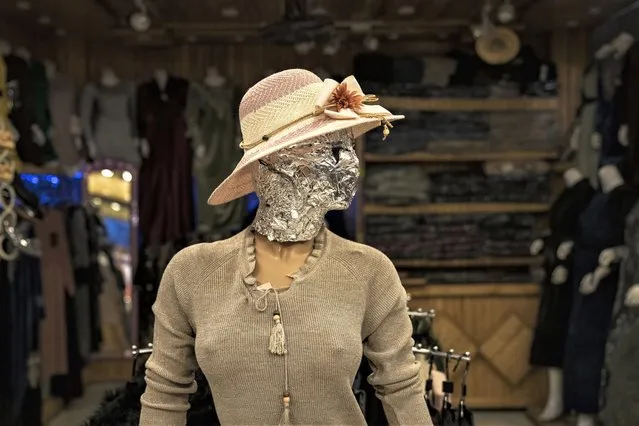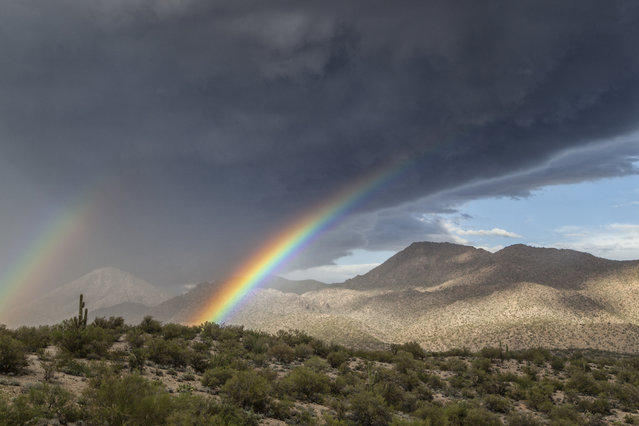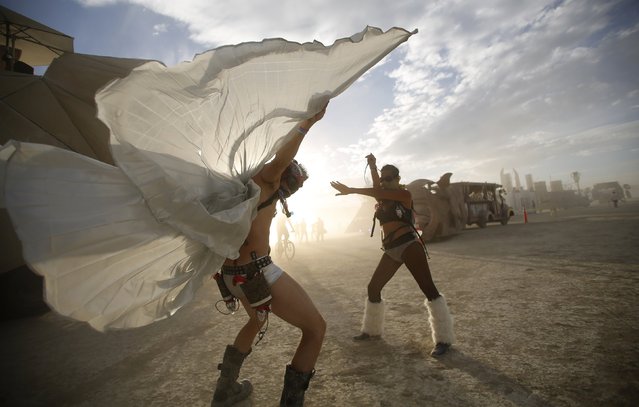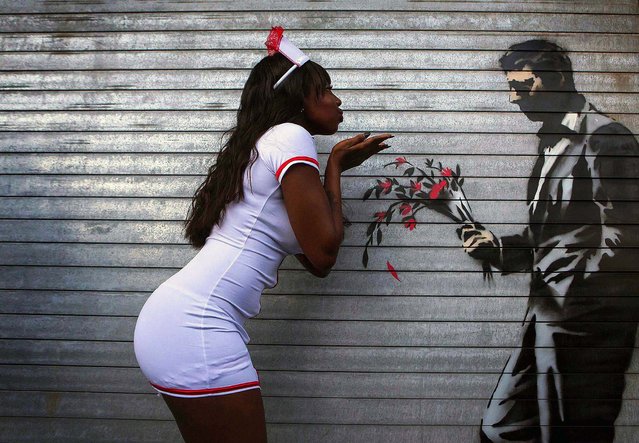
Isaiah Bowen, right, takes a shot as his dad, Garth Bowen, center, looks on at a basketball hoop in front of the statue of Confederate General Robert E. Lee on Monument Avenue Sunday June 21, 2020, in Richmond, Va. A judge extended an injunction delaying the removal of the statue by the state. The statue had become a focal point for the Black Lives Matter movement in Richmond. (Photo by Steve Helber/AP Photo)
24 Jun 2020 00:05:00,post received
0 comments







